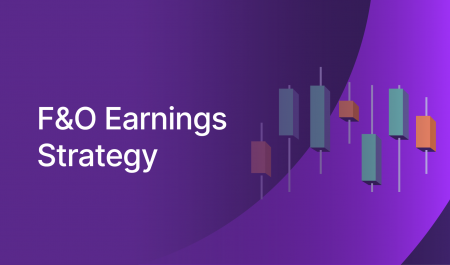Futures & options or derivatives market is a unique place. Aspirations are achieved. Emotions are charged up, and the excitement does not fall so easily. This is because the extent of the stake in the derivatives market is quite high. Not only this, even the size of the derivatives market is quite big. As per reports, India’s National Stock Exchange had surpassed America’s CME Group Inc. to become the world’s largest derivatives bourse by volume.
According to the Futures Industry Association data, in January 2021, volume on the National Stock exchange grew 58% to about 6 billion derivative contracts in 2019, surpassing America’s CME’s 4.83 billion.
But not all make money in this market. Trading in futures and options can be rewarding only for those who understand these instruments and follow trading strategies with discipline. Hence, you must understand these instruments in detail to gain from it. Here is what you should know about trading in futures and options:
What are Futures?
A future is a forward agreement between two parties wherein the buyer agrees to purchase a certain quantity of stock or index at a future date at a predetermined price from the seller. The future gives a buyer and the seller the right to buy and sell respectively the specified share (or the underlying) at a specific future date at a specific price. This can be explained better by an example. Buyer A purchases a futures contract to buy shares of ABC Limited at ₹500 on the last business day of October 2021. This contract is sold by seller B. In case of a futures contract, the buyer has to buy the stock on the future date or cash settle the contract. The same is the case with the seller of the future.
What are Options?
Options are a contract between two parties that gives a buyer the option or a right but not the obligation to buy or sell the underlying at a future date at a future price. The key difference between futures and options is futures ensure that both the parties at contract are obliged to perform. However, in case of options the buyer of the option has the right but not the obligation to perform. However, the seller of the option has to perform as per the agreement.
There are two types of options: Call option and put option. A call option gives the buyer the right but not the obligation to buy the underlying at a future date at a predetermined price from the seller of the option. A put option gives the buyer the right but not the obligation to sell the underlying at a future date at a predetermined price to the seller of the option. Let’s understand this with the help of an example. Here we are using the option buying strategy.
A buys a call option of stock ABC at ₹500 (strike price) on the expiration day by paying a premium of ₹7. This option is sold by seller B. The premium will be pocketed by the seller of the option. The trade becomes profitable for the buyer A when the stock price crosses the strike price plus premium paid. In this case, the trade becomes profitable for the buyer when the ABC stock starts trading above ₹500 + ₹7 = ₹507 per piece.
Now, let us see how a put option works with the help of an example.
L buys a put option of stock ABC at ₹500 (strike price) on the expiration day by paying a premium of ₹9. This option is sold by the seller M. The premium will be pocketed by the seller of the option. The trade becomes profitable for buyer L when the stock price goes below the strike price minus the premium paid. In this case, the trade becomes profitable for the buyer when the ABC stock starts trading below ₹500 – ₹9 = ₹491 per share.
Although, few things should be kept in mind before trading in futures and options. These are:
Payoffs
The payoff given by futures is linear. For example, if one buys a stock ABC in futures at ₹500 and moves to ₹520, the buyer gains ₹20 and the seller loses ₹20.
However, in case of options, the payoffs are not linear. The buyer of an option can gain unlimited, whereas the gain for the option writer (or seller) is limited to the extent of the premium received. The loss of an option buyer is limited to the extent of the premium paid, whereas the loss of an option seller can be unlimited.
Option selling
Though option selling is profitable in most cases, one might have to be very careful about it. It is like running an insurance company– a professional’s forte. Most investors prefer to sell options rather than buying it. They have risk management practices in place which do allow buying a naked option selling. Instead, they prefer to deploy strategies that cover them up in case of significant movements in the price of an underlying on either side. Also, option selling requires a large margin. And hence it is an activity that requires deep pockets.
Non-directional strategies
While trading in cash markets, you need to be very clear about the direction of the stock or the index. You can make money only when you get the direction right. But in options, you can make money even when you are not sure about the market’s direction if you follow the right strategy.
Liquidity
If you explore the world of trading strategies in options, you will be amazed by the quantum of risk-return involved. Sophisticated strategies attract many investors. But here is a word of caution. When you trade options, do not ignore liquidity. Though there are many stocks and indices on which options are traded in the market, very few are consistently liquid. For example, in the Indian stock market, the Nifty and the Bank Nifty options are liquid across strike prices. But barring a few stocks, most stock options are not liquid. If you enter into an illiquid counter, then you should be able to exit it. If there is not enough traders’ interest, then the exit may become difficult.
Enhancing returns
If you hold a large number of shares of a company and do not expect it to move in the near term, then there is no contribution to your portfolio return in that short period. But do not lose heart. You can still make some money out of it by selling an out of the money call option on that stock. This way you pocket the premium if the stock does not move. If the stock moves up, you will lose on the option trade, but your stock price appreciation will compensate you.
Reducing risks
Trading in futures and options can reduce your risk if you follow the right strategies. You can hedge your positions as well. If you are holding large long positions in the cash market or futures, you can hedge by purchasing put options on the same underlying. Though this sounds interesting, check the premium payable. The premium payable on options goes up drastically when there is an event risk. For example, the premium payable on the Bank Nifty options are expensive if the market expects some big announcements in the monetary policy committee briefing. The premium payable on the Nifty options increases when the Union Budget is round the corner as the volatility comes into play. Hence, you must choose the right tool or strategy.
Money management
While trading in options and futures, you should allocate your money efficiently to trades. You should ideally take multiple trades across time frames. This reduces risks. Right position sizing can help you make optimum risk adjusted returns.
Trading in futures and options requires relatively more capital in comparison with the cash market. Given the leverage involved the outcomes are also amplified compared to trades in the cash market. Hence, it is better to paper trade initially. It gives you confidence and saves you from big losses, and exposes some real-life hurdles if any. You can take corrective actions. It can help you solve the million dollar question – how to trade futures and options?


